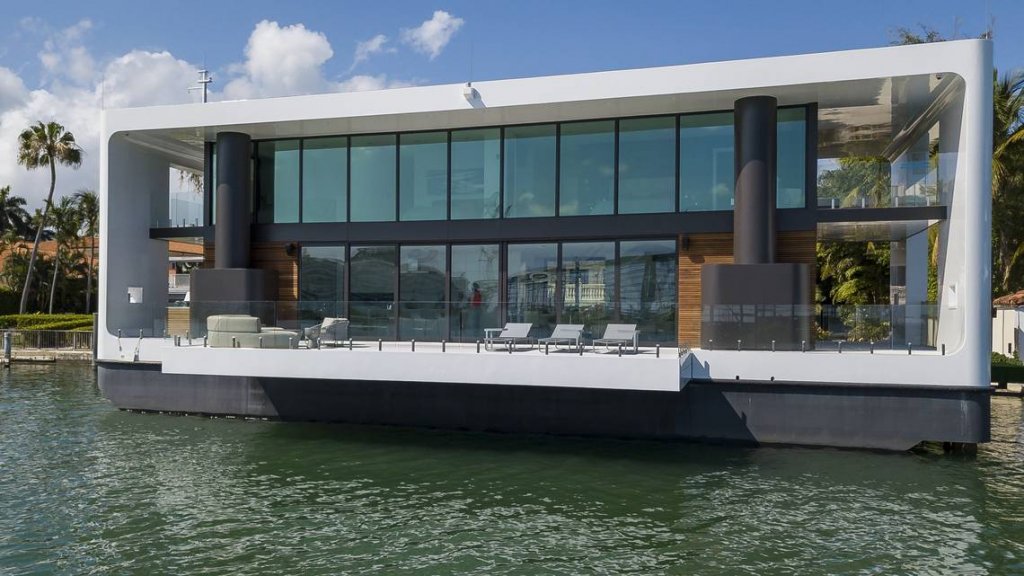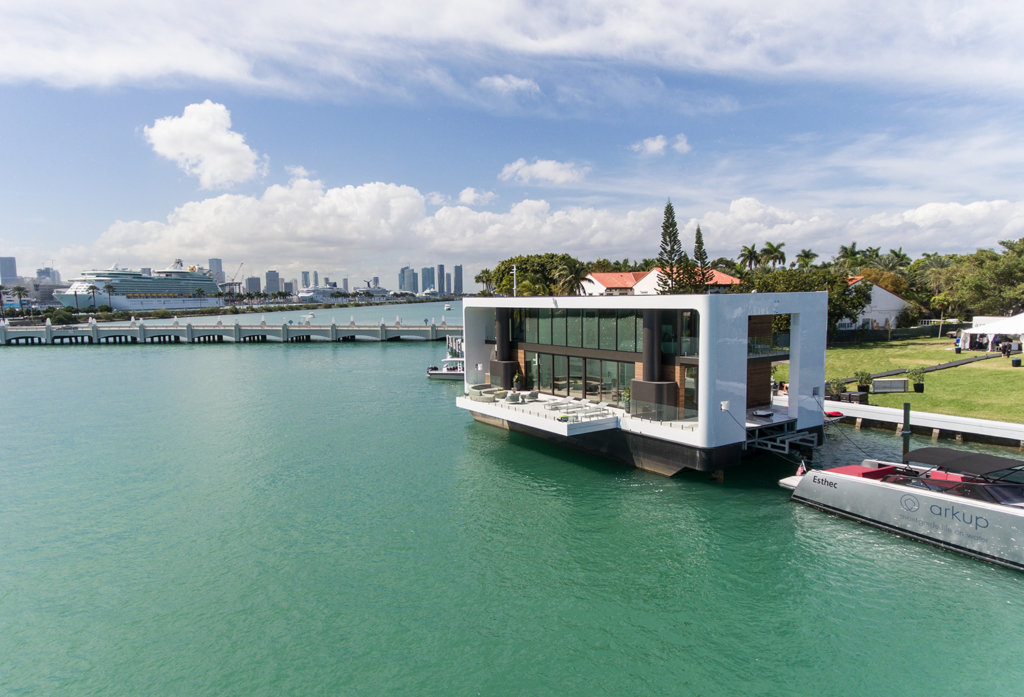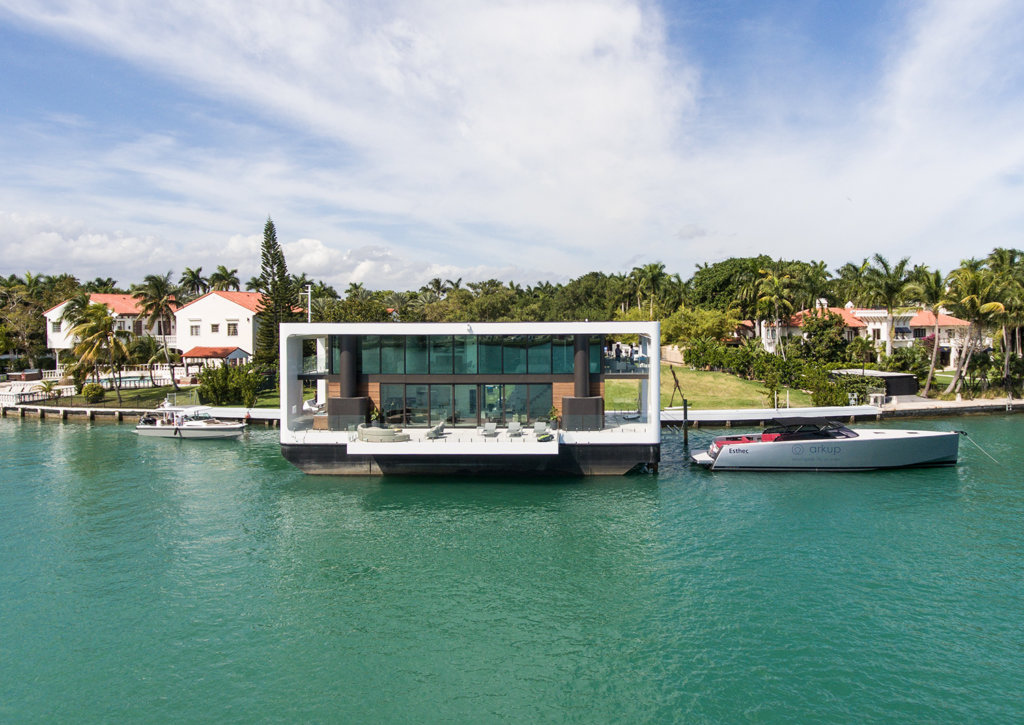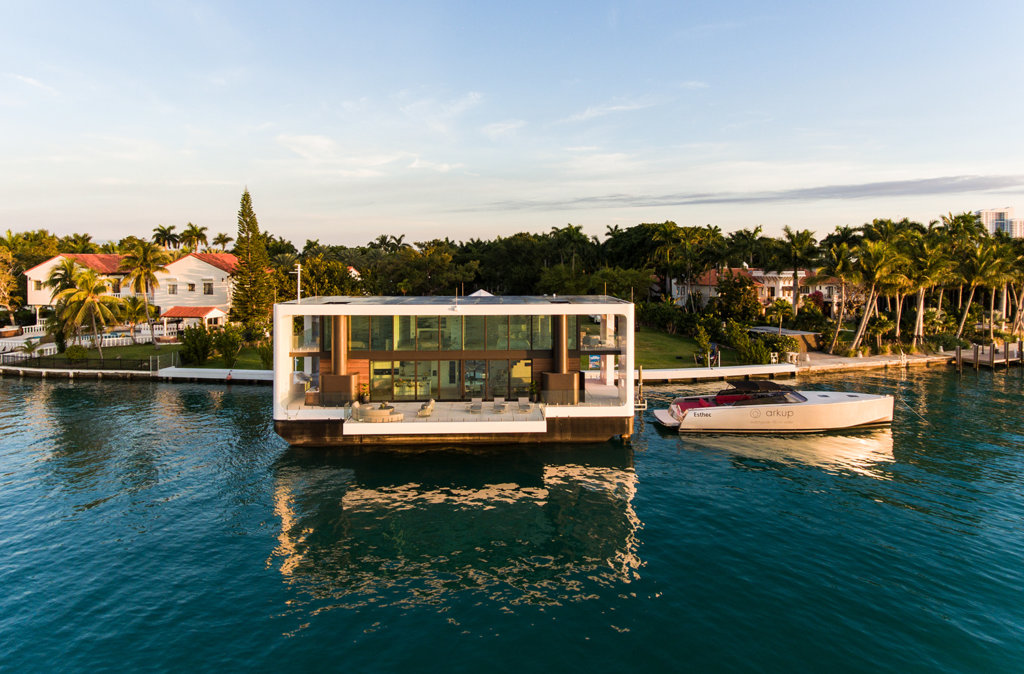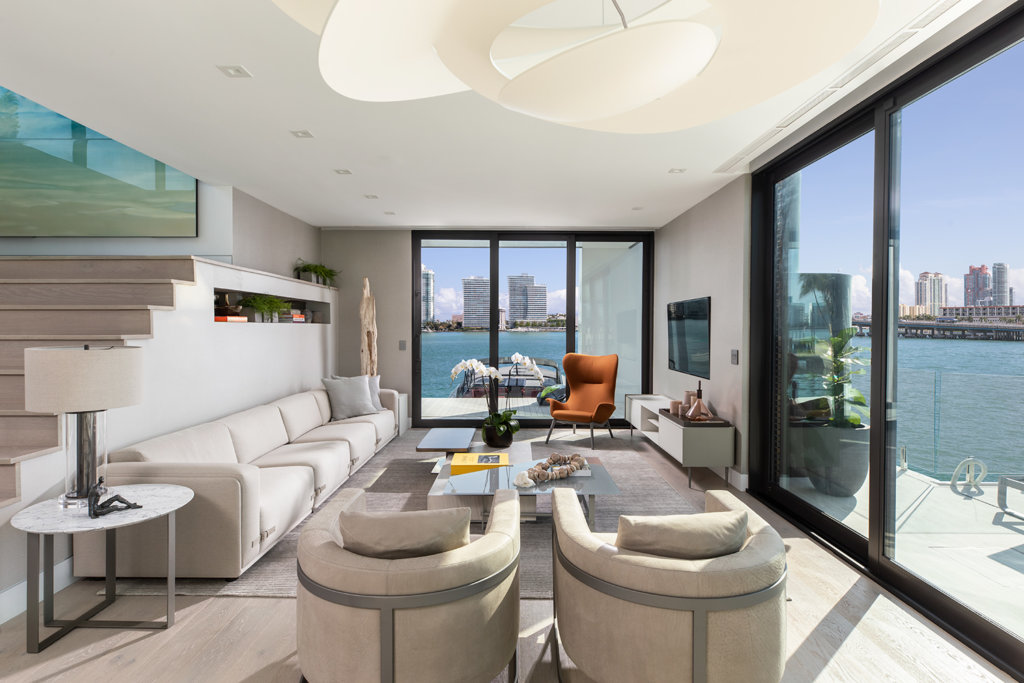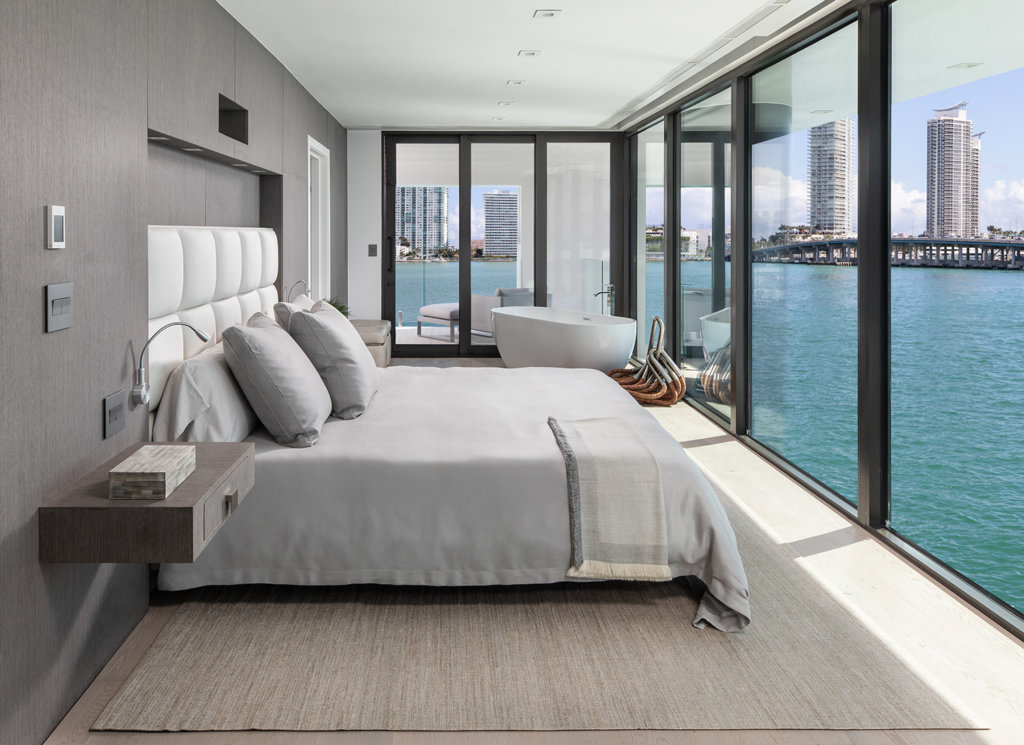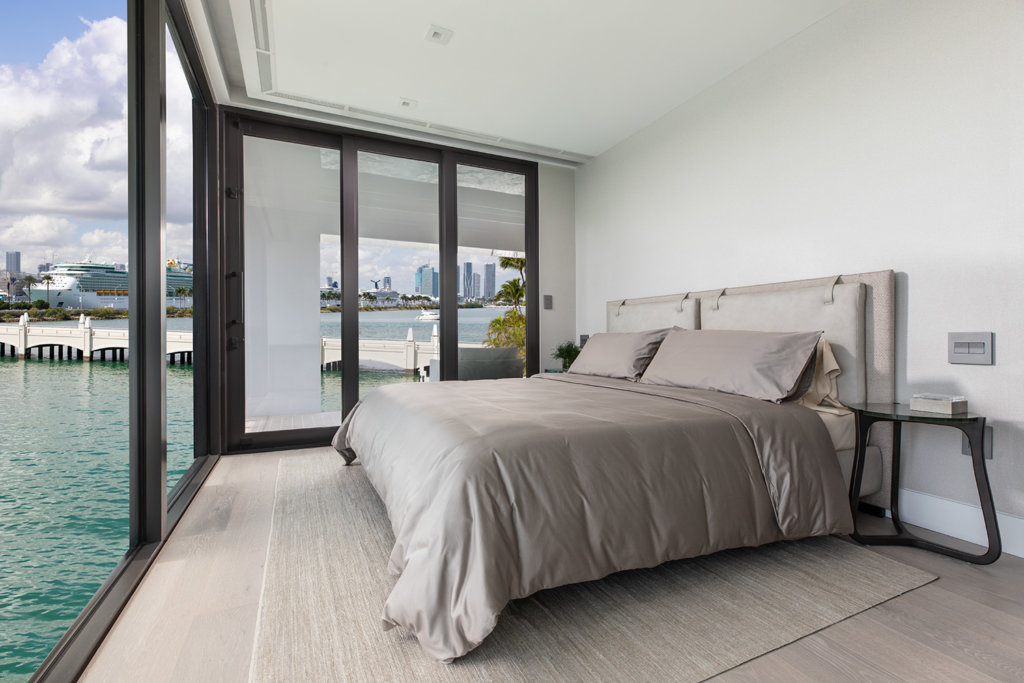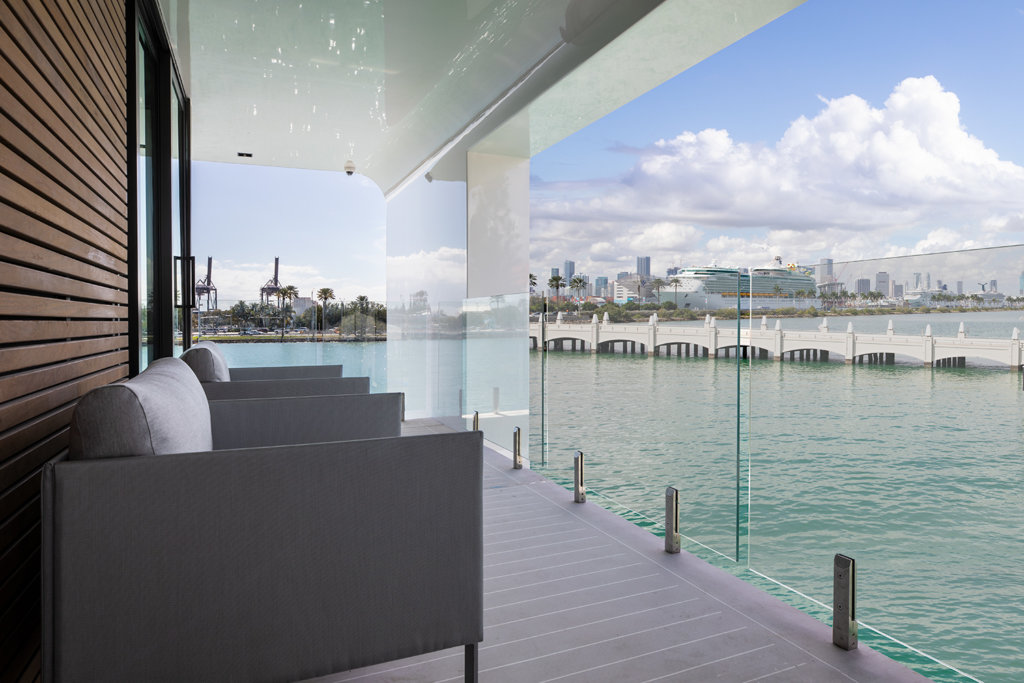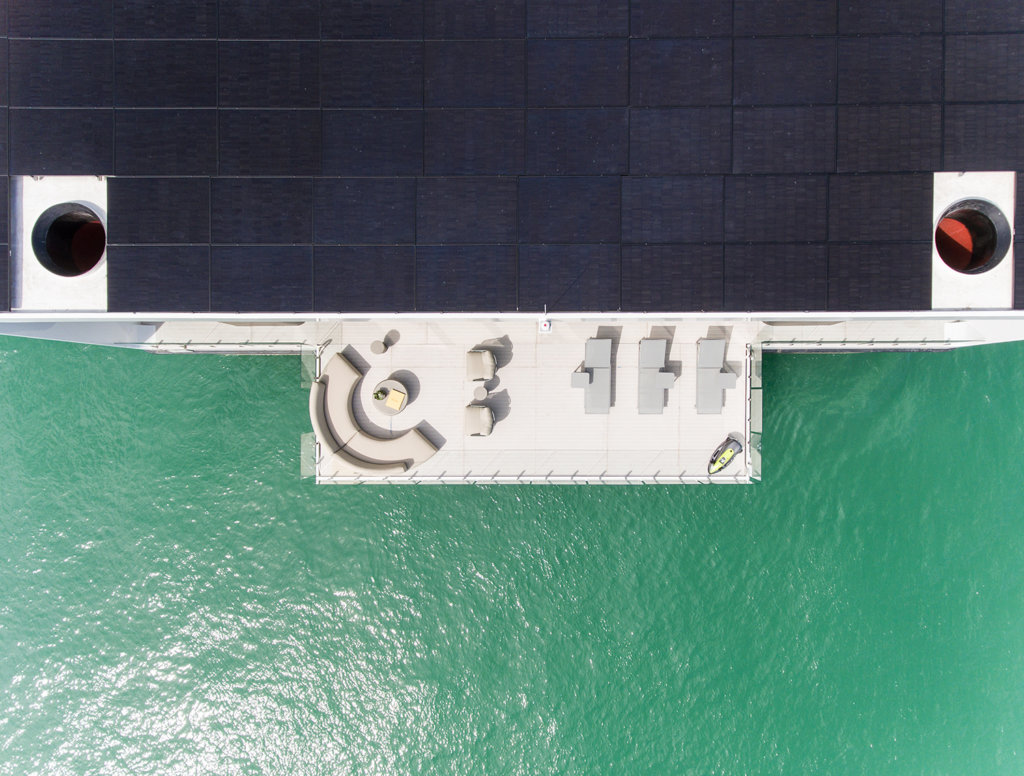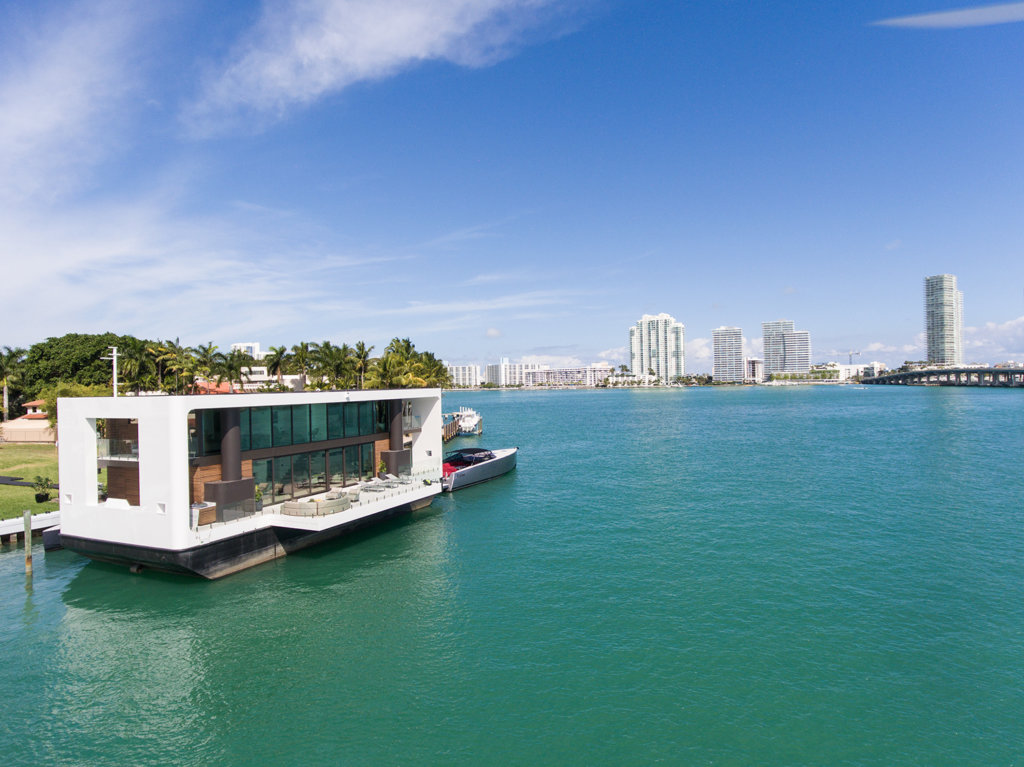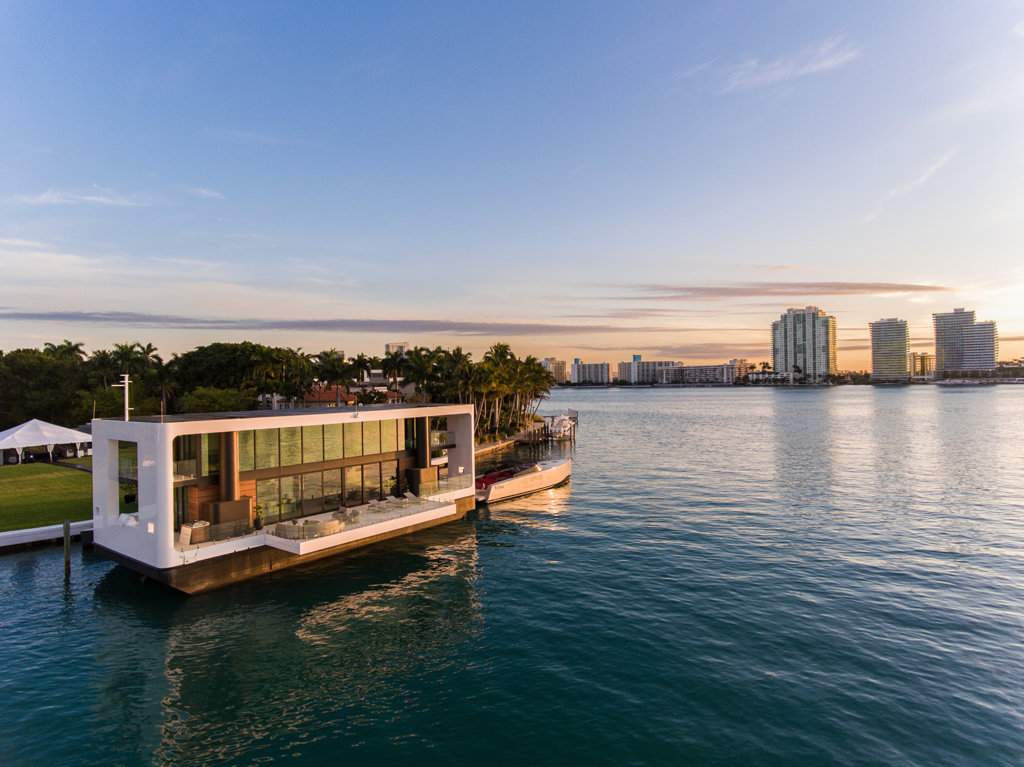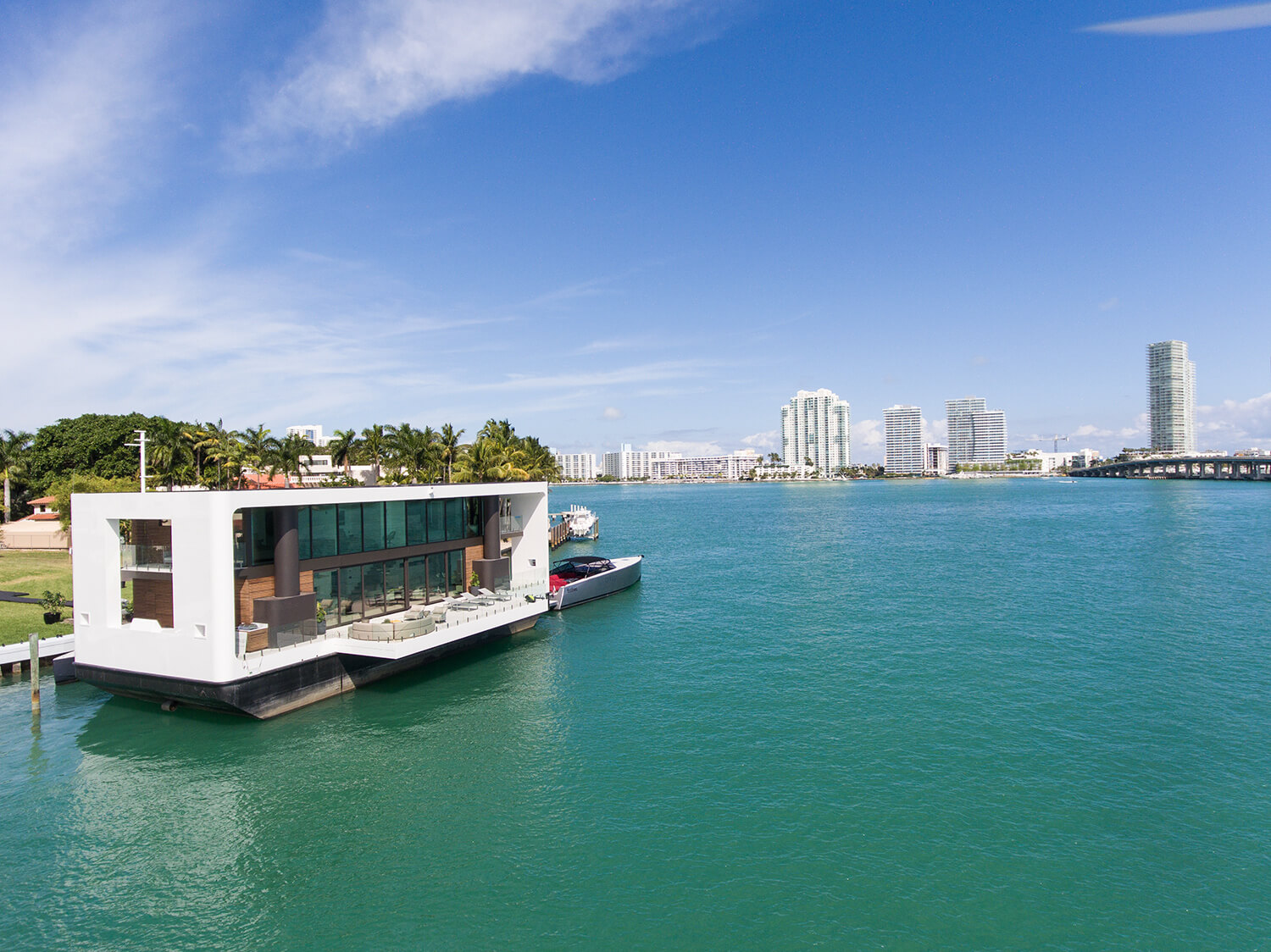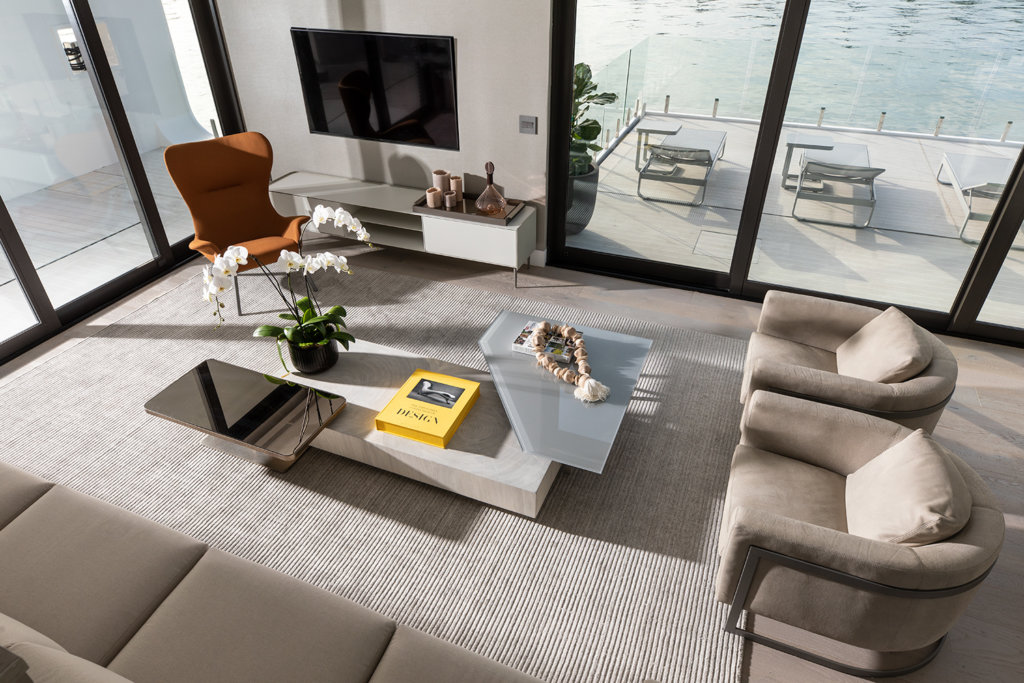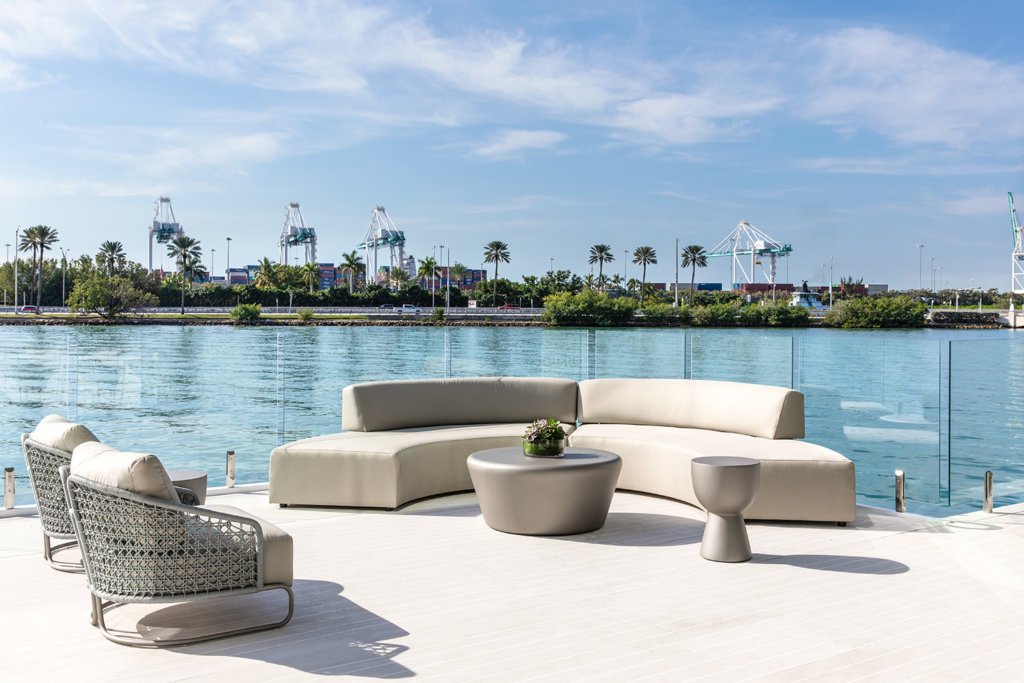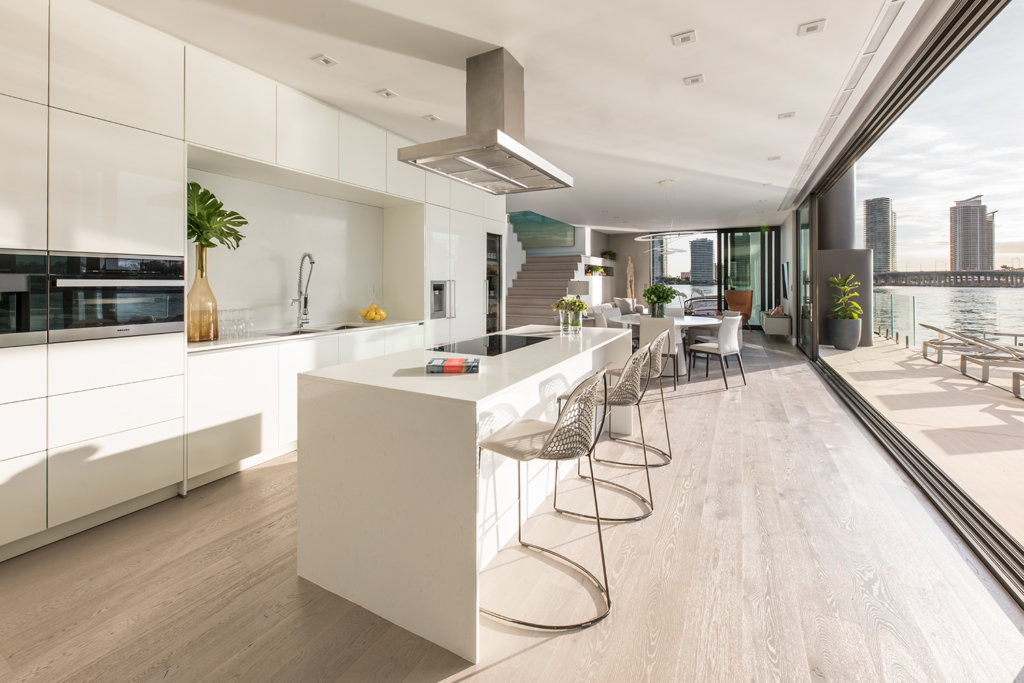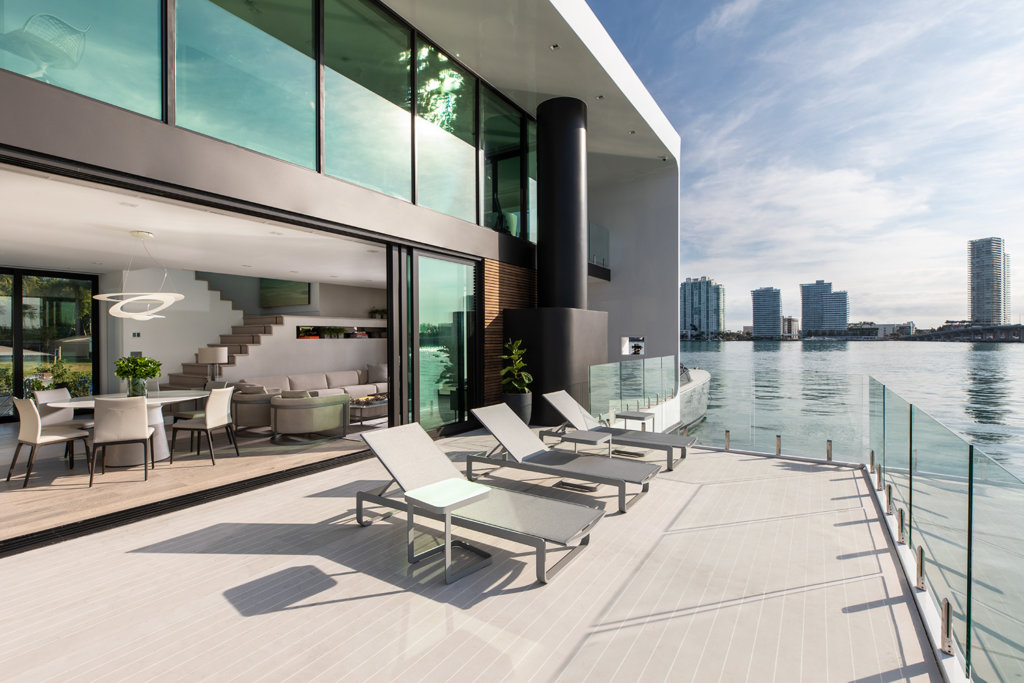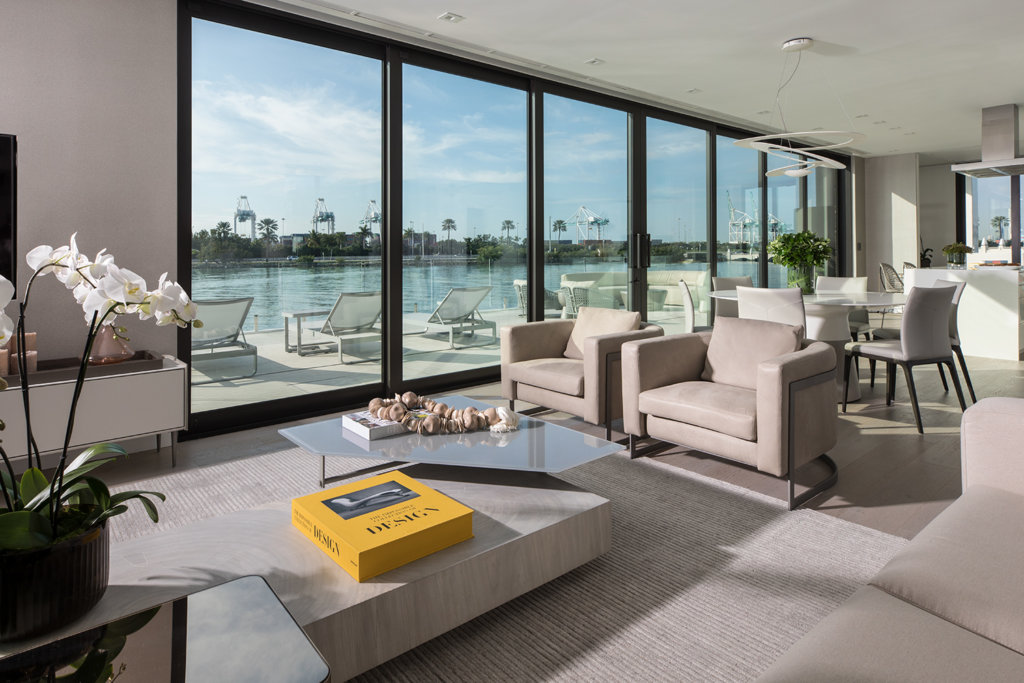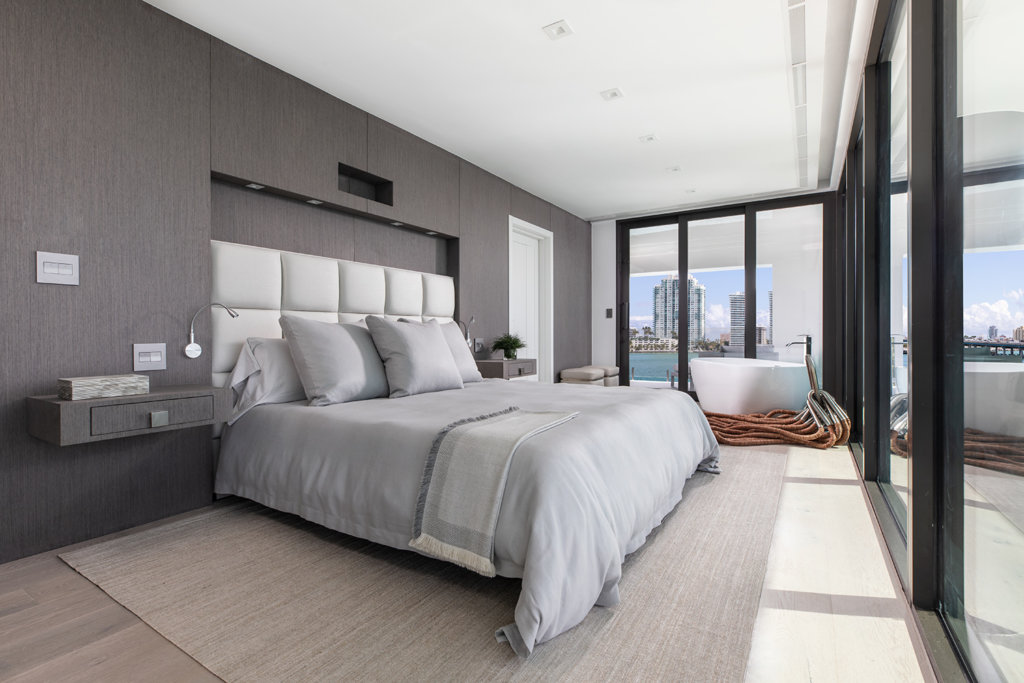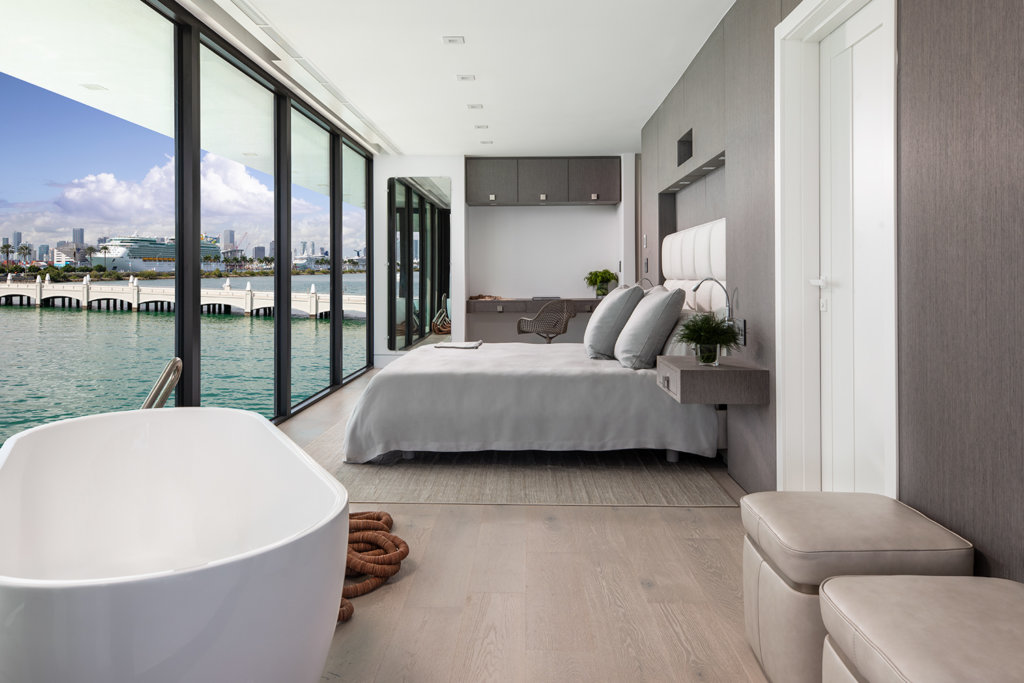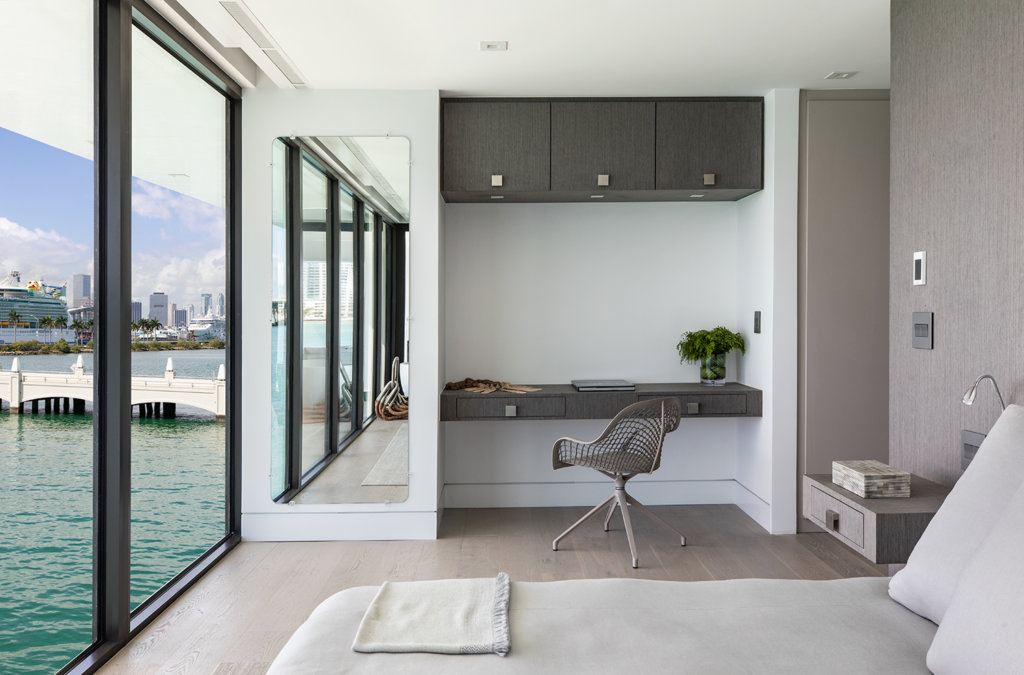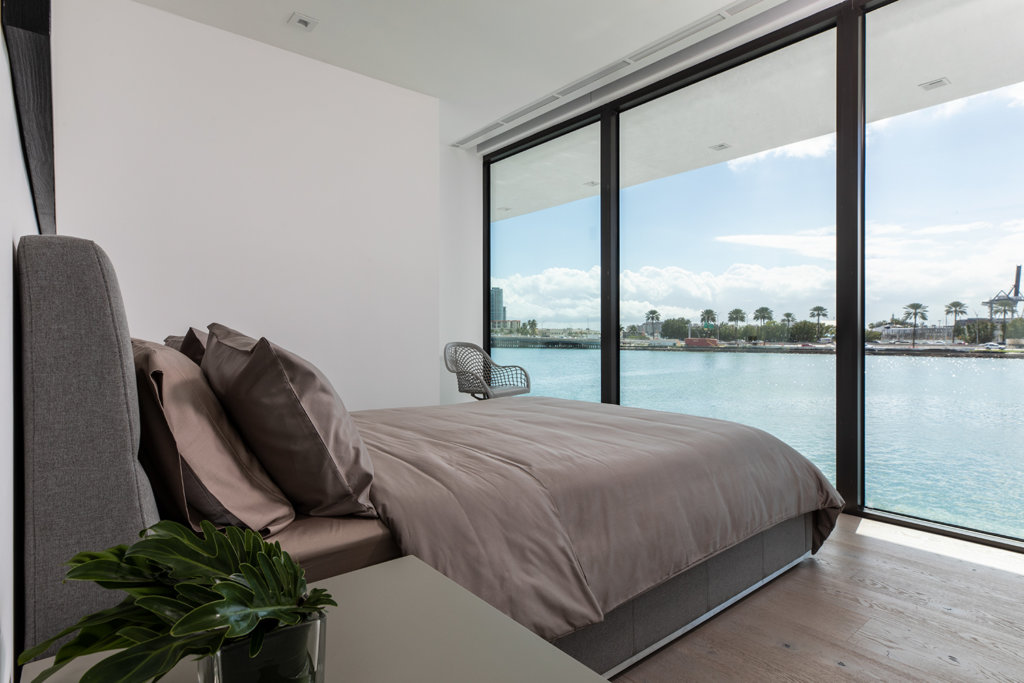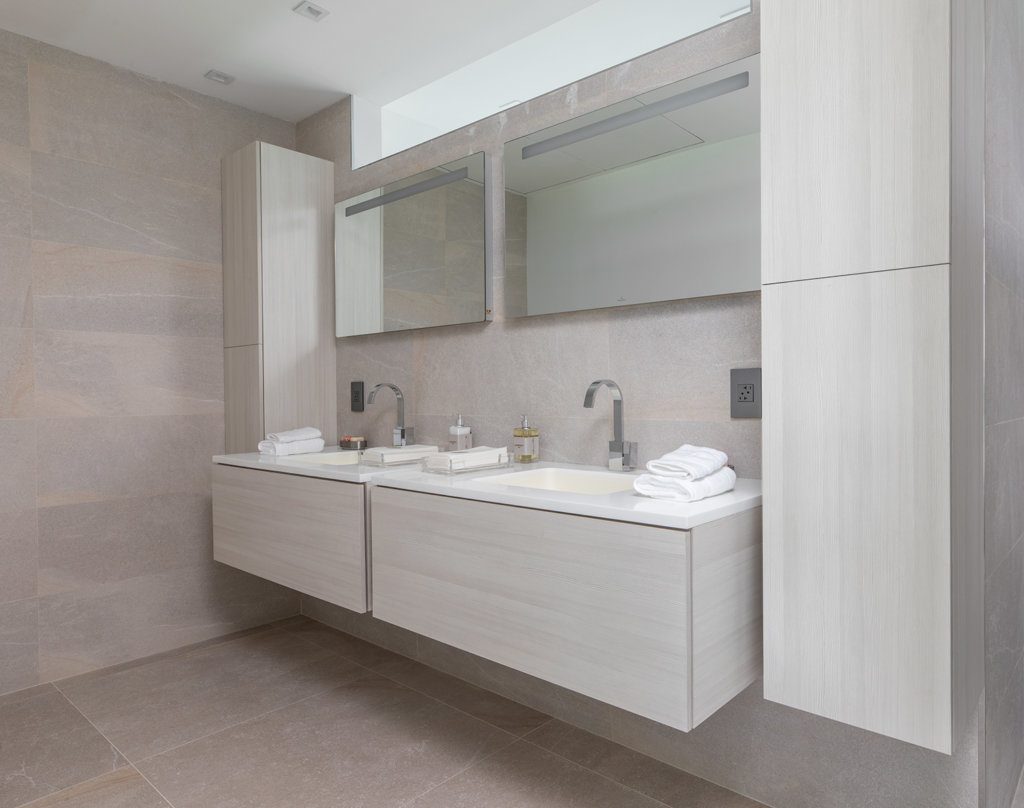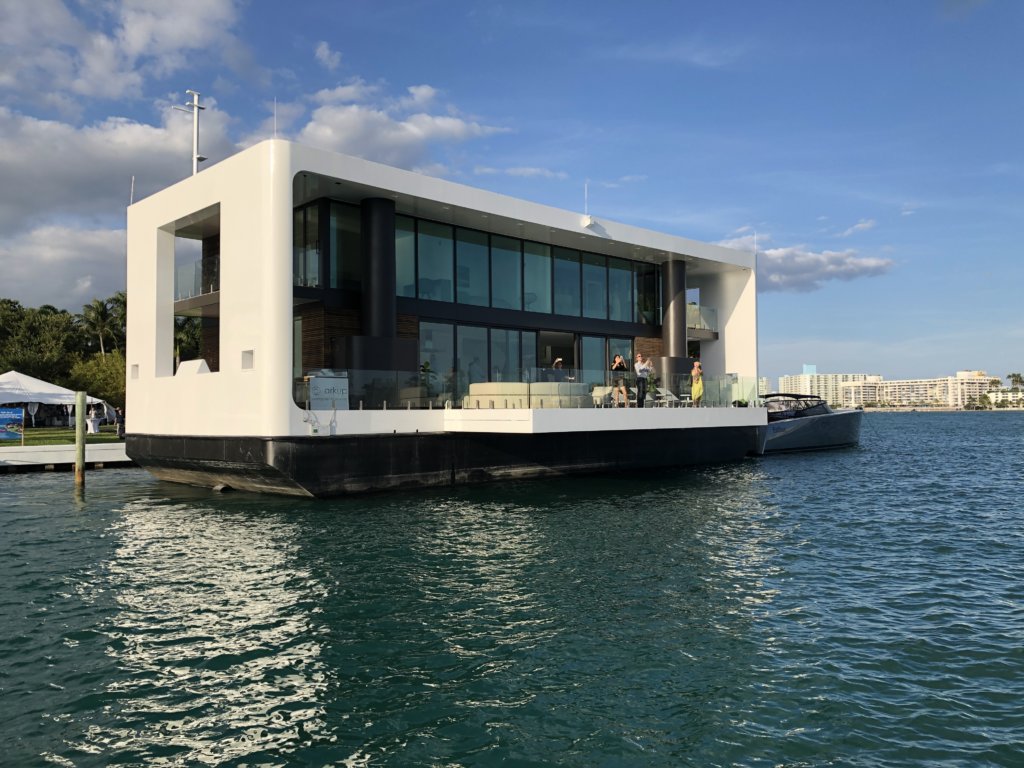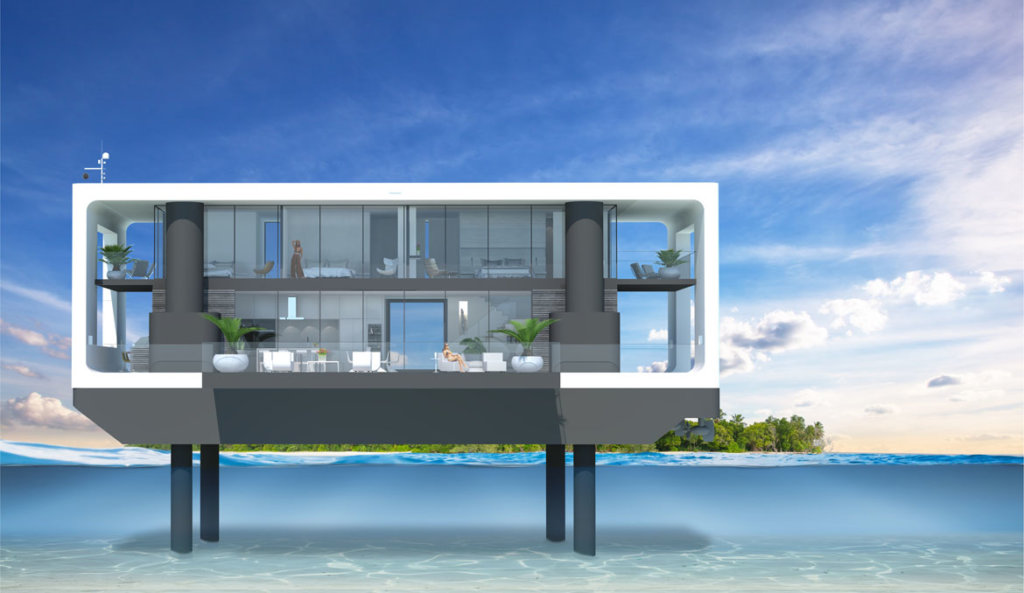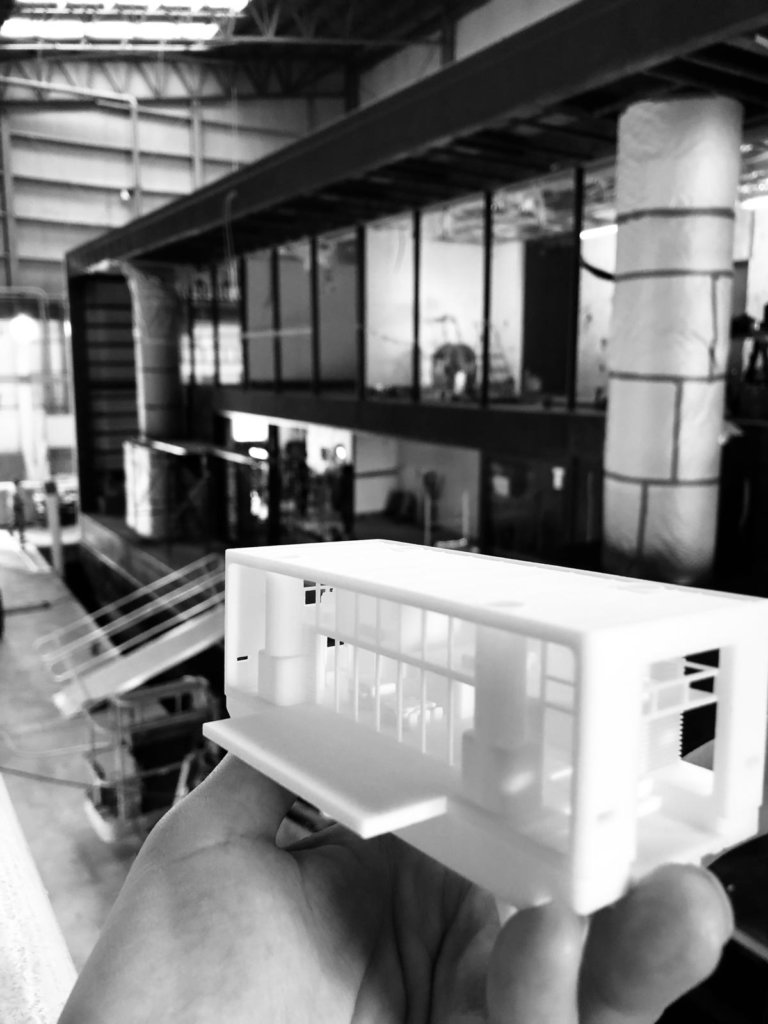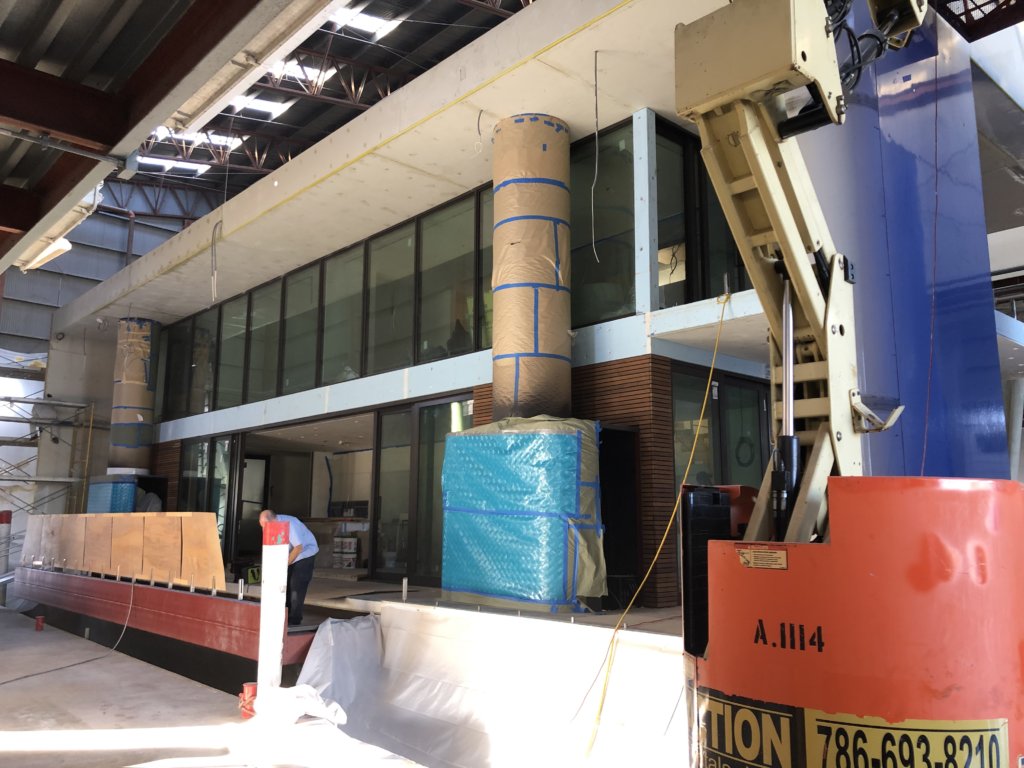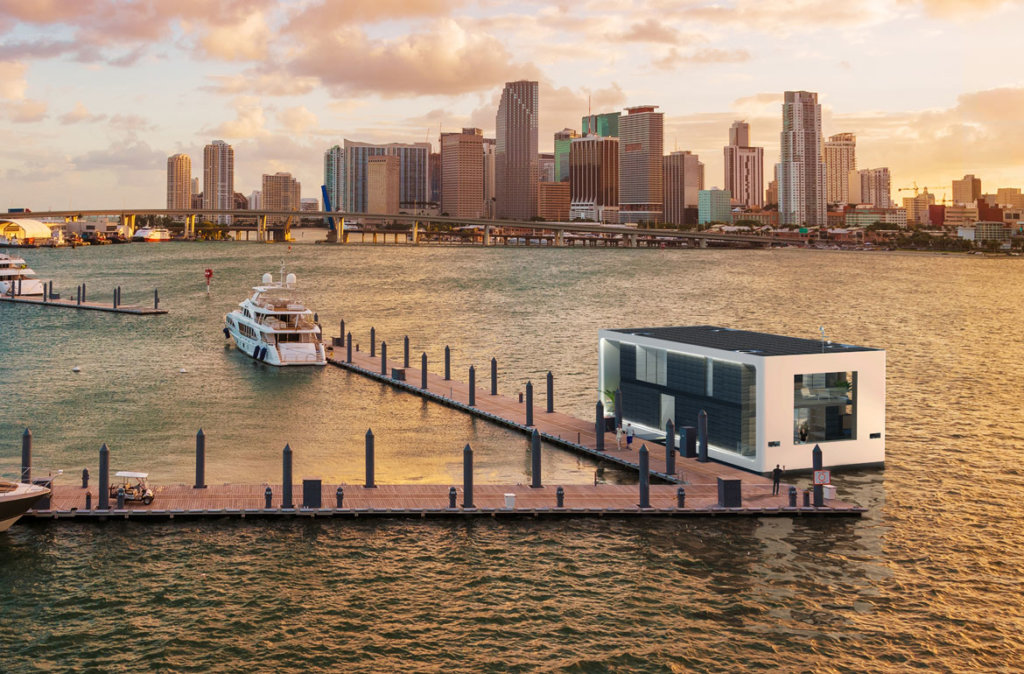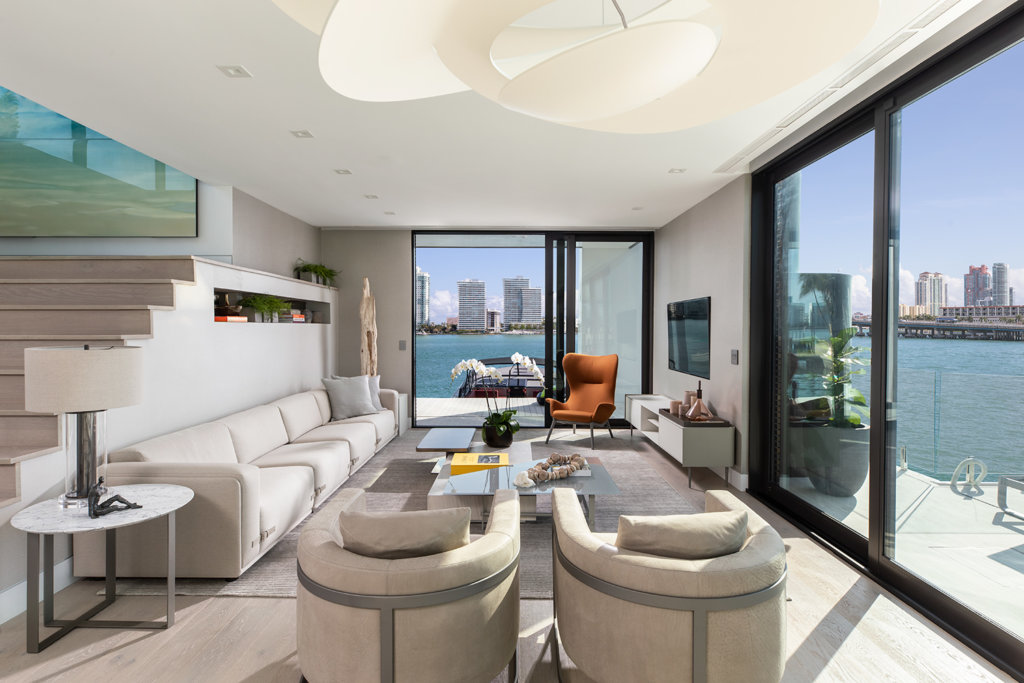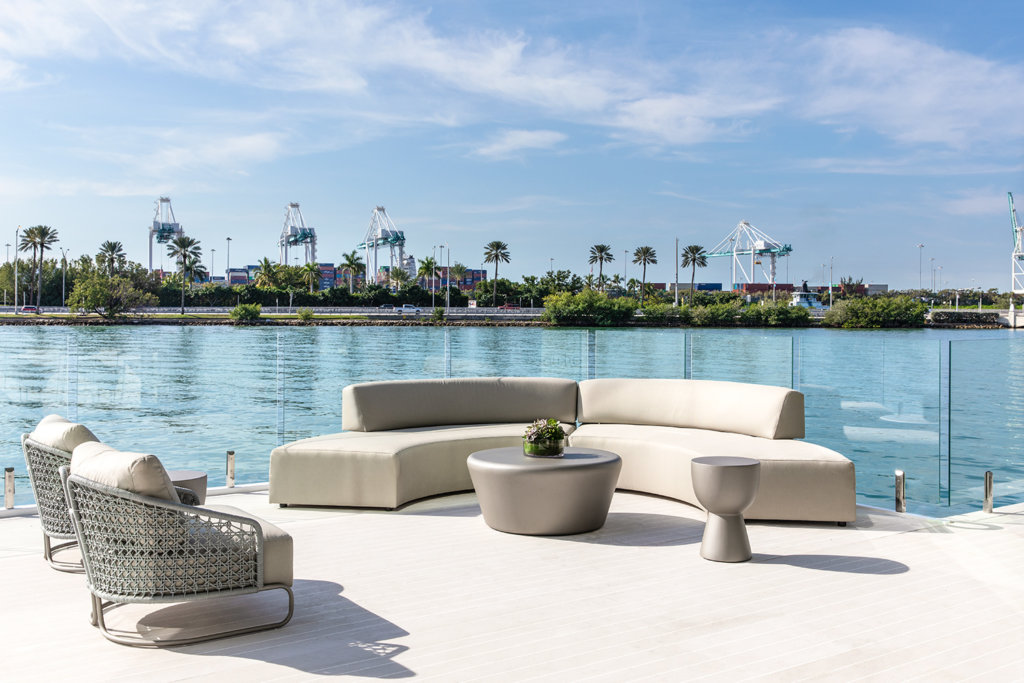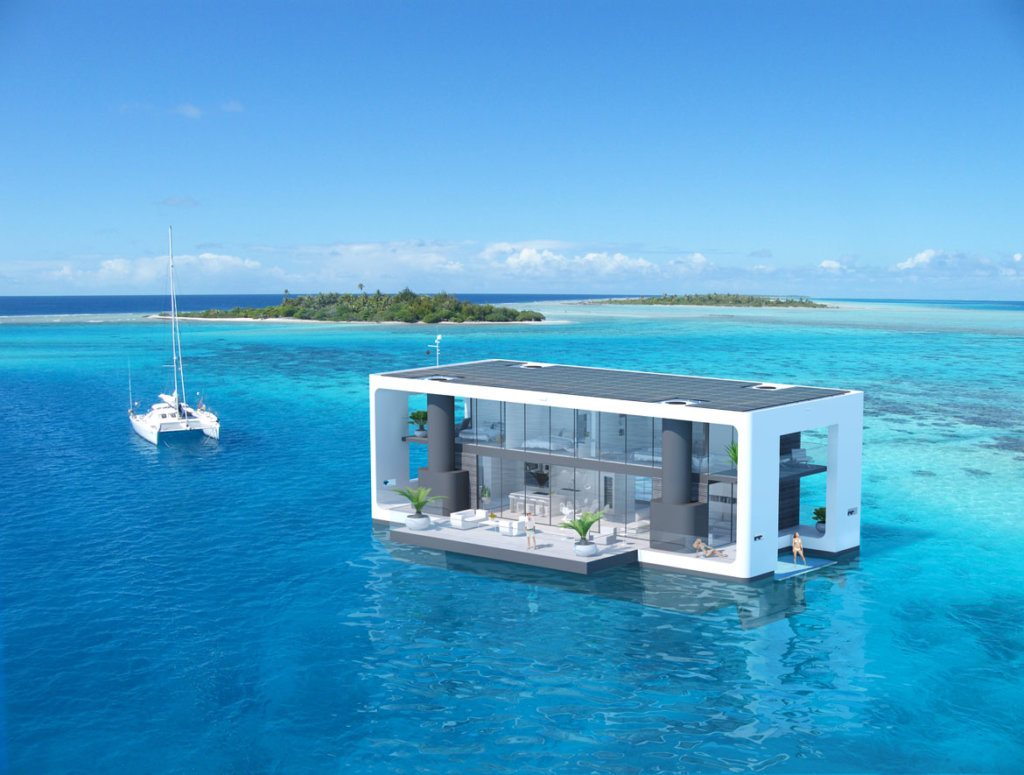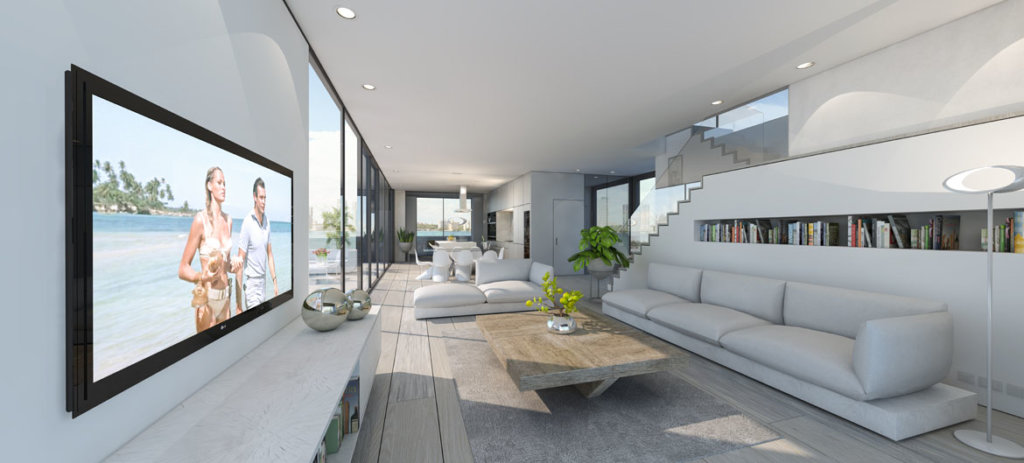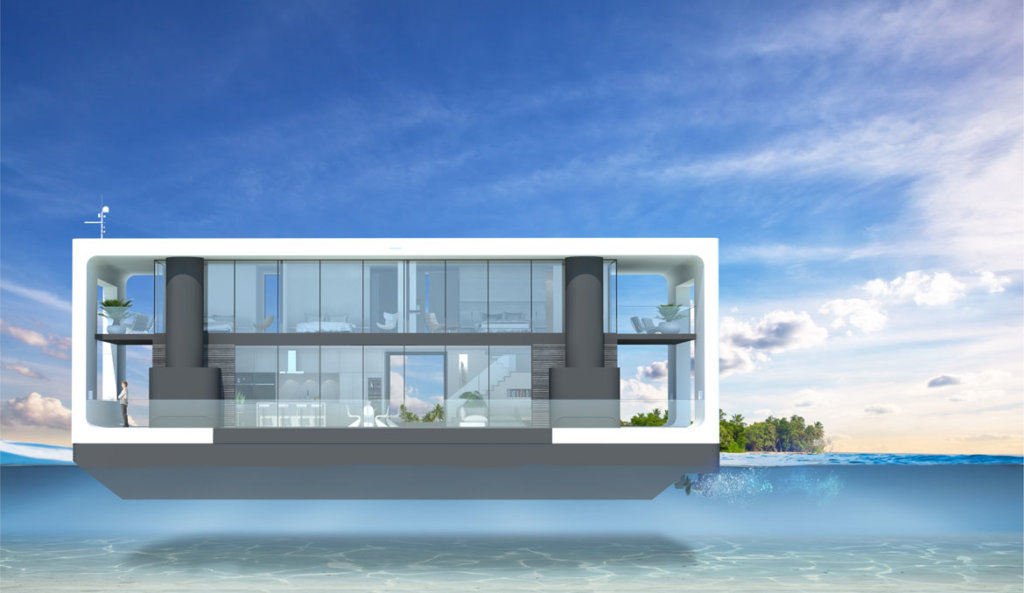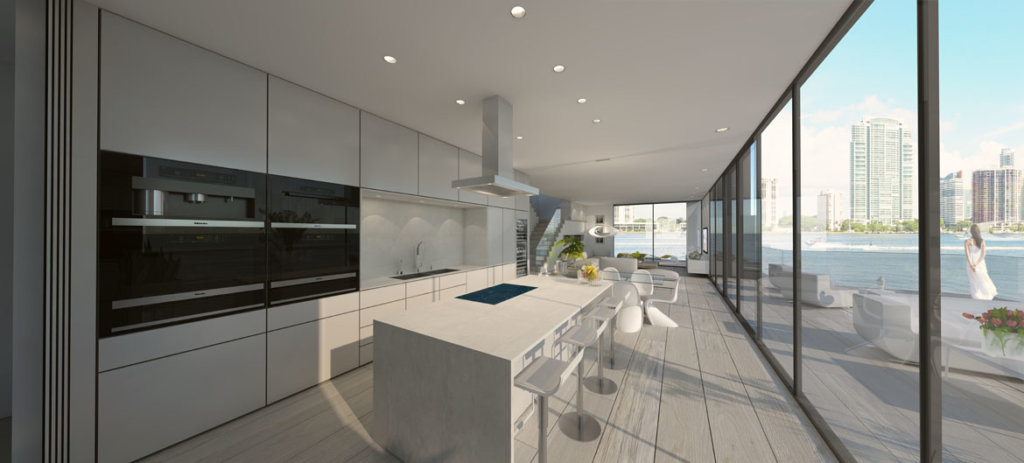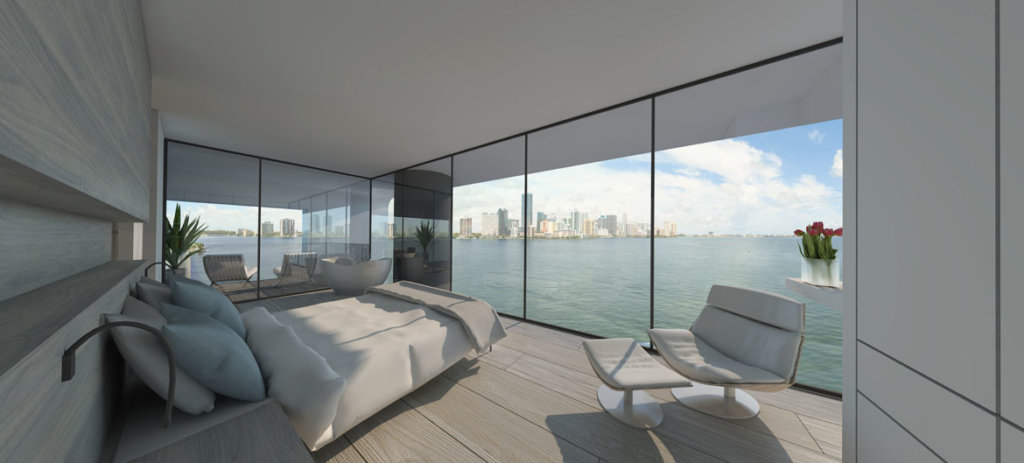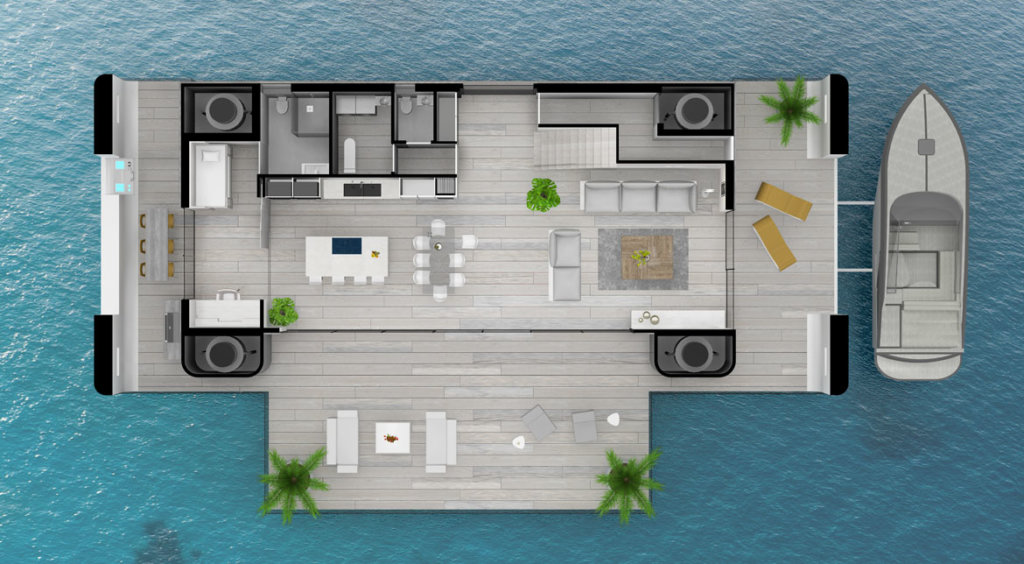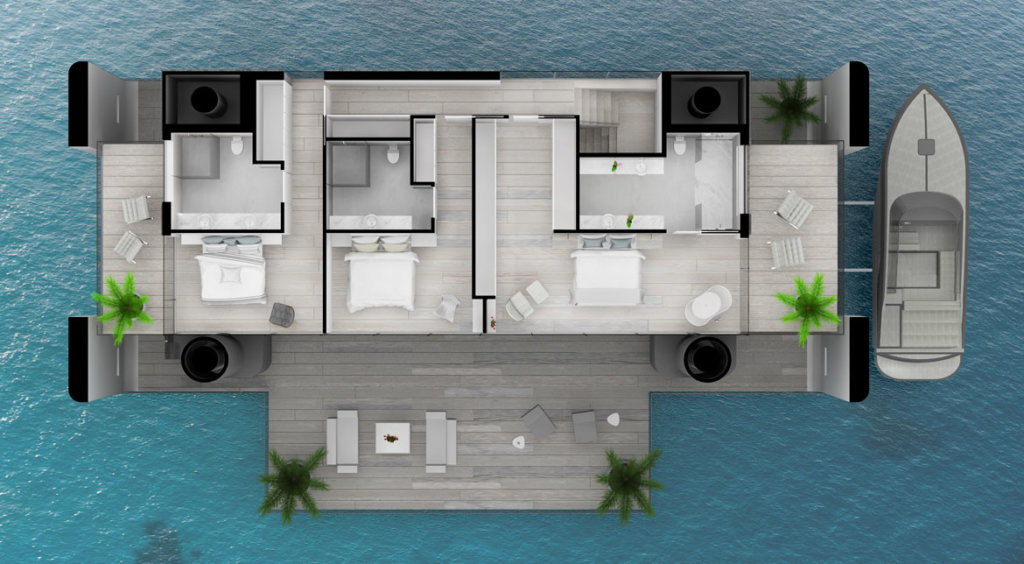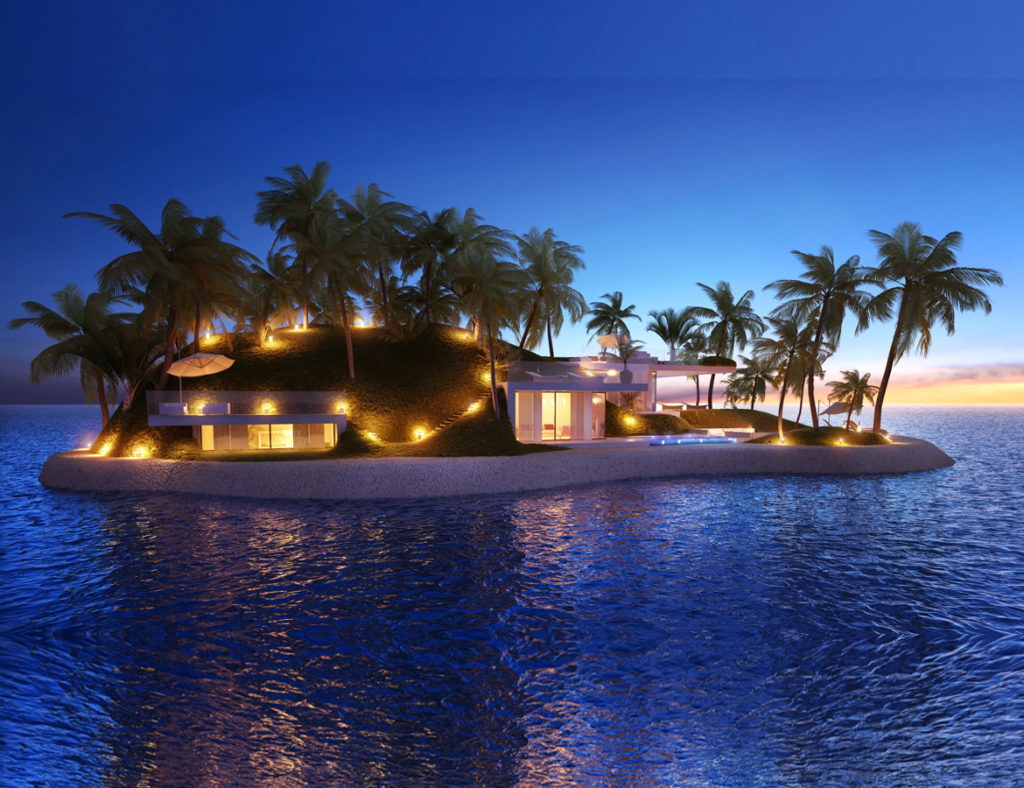This houseboat of the future is a $5.5 million floating mansion designed for sea level rise
By Linda Robertson
Miami Herald
April.30.2019
The Arkup houseboat, a green-energy luxury floating home that can adapt to sea rise, docks off Palm Island near Miami Beach on Saturday, April 27, 2019. The floating house has solar panels, impact resistant windows and can withstand hurricane winds of up to 155 miles per hour. MATIAS J. OCNER MOCNER@MIAMIHERALD.COM
Why let sea rise sink your Miami lifestyle when you can go with the flow aboard the Arkup houseboat?
Arkup features the ingenious engineering feature of four hydraulic pilings that stabilize the vessel on the sea bottom or allow it to lift like a house on stilts above floodwaters, king tides and hurricane-whipped storm surges. South Florida sea levels are projected to rise 6 to 12 inches by 2030, 14 inches to nearly three feet by 2060, and 31 inches to nearly seven feet by 2100, according to the Southeast Florida Climate Change Regional Compact Sea Level Rise Work Group. Miami Beach and the Keys may be inundated first, but the entire region is recognized as one of the most vulnerable on the planet.
In this brave new waterworld, Arkup wants to keep you high and dry on your floating home.
Noah, who constructed his ark to withstand 40 days and 40 nights of apocalyptic rain and Biblical flooding, would approve. He probably could not afford the modern version, which has a sticker price of $5.5 million, but he would like the comfort, spacious bathrooms and retractable swimming platform.
Arkup, solar-powered and equipped with a rainwater-collecting-and-purifying system, is a self-sustaining home, a green adaptation for our blue future.
“It’s more like a house than a boat but you never lose the unmistakable feeling that you’re on the water,” said Nicolas Derouin, managing director of Arkup.
Arkup was designed and built in Miami by Derouin and Arnaud Luguet, two French engineers who live here and have a passion for the oceans and environmental preservation.
They have witnessed the impact of climate change and sea level rise in their adopted hometown and around the world. On Monday, Indonesia announced it will move its capital out of Jakarta, a swampy, flood-prone and drowning metropolis of 30 million people.
“It is happening before our eyes,” Derouin said. “Coastal areas are the most desirable but also the most at risk. Miami is implementing resiliency measures. We hope Arkup can be a small part of the solution.”
Derouin and Luguet were inspired by the Dutch floating communities of IJburg and Schoonschip.
“In the Netherlands, one third of the country is below sea level,” Derouin said. “They want to develop housing alternatives. Instead of fighting the water, live on it.”
Lake Union in Seattle has 500 permanently docked houseboats. Paris has restaurants, a hotel and is building a 2024 Olympic venue on the River Seine. Dubai has floating vacation homes. In San Francisco, where Sausalito has a houseboat community, the Danish firm BIG has proposed building an archipelago of floating villages connected by ferries on the bay. The Lincoln Harbor Yacht Club in Weehawken, N.J., which was devastated by Superstorm Sandy, may reinvent its marina as a houseboat haven.
“We decided to design a boat that looks and feels like Miami, is compatible with a subtropical climate and gives the owner the freedom and flexibility to move,” Derouin said.
Their ultimate goal is to create an affordable model, develop floating neighborhoods and partner with island hotels to build eco-bungalows on surrounding waters.
“We want to design small apartments on the water for students, townhouses for families,” Derouin said. “We want to create housing solutions for a broader audience. That’s the vision behind Arkup.”
Derouin and Luguet collaborated with Dutch firm Waterstudio and pioneering aqua-tect Koen Olthuis, who has designed a floating mosque, floating prison, floating spa and floating resort and helped conceptualize a proposed development of 29 private islands with lavish sustainable homes — a villa flotilla — on Maule Lake in North Miami Beach.
“He is an advocate of urban planning on the water,” Derouin said.
You may have noticed Arkup — which was unveiled at the Miami Boat Show in February — docked at Star Island and now Palm Island. You can see it from the MacArthur Causeway. With its floor-to-ceiling windows, it looks like a large glass box.
On board, it doesn’t look or feel like a boat. No rocking, for one thing. It has two air-conditioned levels, with 9-1/2-foot ceilings on the first floor and 8-1/2-foot ceilings on the second. There are three bedrooms upstairs with three full and roomy bathrooms — no cramped and tilting heads on this boat — and two balconies.
Downstairs, there’s an inviting living room, kitchen, dining area, two bathrooms and a small room with a Murphy bed that could be an office or guest quarters. Interior design is by Brazilian company Artefacto. A sliding outdoor deck adds 500 square feet of floor space when fully extended.
At the stern, the swim platform can be lowered into the water to create a mini pool. There’s a boat lift for your kayak or amphibious vehicle.
The bow deck has an outdoor kitchen and console controls for navigation and operating the 136-hp rotating electric thrusters, which emit no noise and require no diesel fuel, and the anchoring system, which allows adjustments of each piling to level the boat.
Arkup has a maximum speed of 7 knots and a range of 20 nautical miles that can be increased with additional battery banks or a backup generator.
“We can’t match the navigational capacity and speed of a yacht,” Derouin said. “You couldn’t cruise around the world, but you could use Arkup in the Bahamas or British Virgin Islands, for example.
“Our vessel is 75 feet long and 32 feet wide and we have the same livable space as a yacht that is 110 feet long. Arkup is for people who prioritize space and comfort over speed and range.”
Arkup’s steel hull and superstructure is built to withstand Category 4 hurricane winds (up to 156 mph). The 40-foot-long pilings, or spuds, enable the boat to anchor in up to 25 feet of water and elevate above the waves. The draft is five feet. It’s got a 4,000-gallon freshwater tank and an equal-sized tank for waste water. The 2,400-square-foot roof is covered with 36-kilowatt capacity solar panels that recharge the battery.
“A motor yacht is the opposite of sustainable,” Derouin said, pointing to a gigantic yacht parked behind Arkup and to passing motorboats that pause while curious passengers take a look at Arkup. “Large engines. Massive fuel consumption. Pollution. On Arkup you can live completely off the grid with no bills for energy or water. It is zero emission, carbon neutral. In this house, you don’t need to rebuild your seawalls or move your air conditioner to higher ground. Compared to the costs of a waterfront home, Arkup is competitive.”
Plus it’s got panoramic views of the downtown skyline and dolphins swimming by the side deck.
So far, the partners have one buyer and a waiting list of potential buyers who want to take the boat for a test drive.
“We’ve had an amazing response,” Derouin said. “Our clientele includes owners of private Caribbean islands who think Arkup is better than building a beach house. Or people who live full or part time in Miami and want a toy for the weekends, to take friends out on the bay. We have people who live elsewhere and Arkup would be their second or vacation home. And people who see it as their primary home, docked at a marina. It’s a luxury product for a niche market but our dream is to develop affordable versions with the same principles.”
Miamians who don’t want to flee could take to the sea. As oceans swell and coastlines shrink, trade house for houseboat.
“We need more entrepreneurs and scientists developing innovative ideas because climate change is not slowing down,” Derouin said. “Here’s one new way to live in harmony with the water.”

